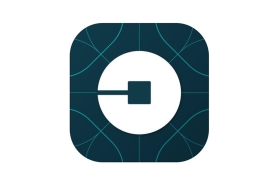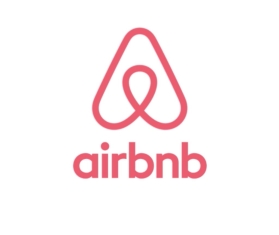What banking and financial services brands can learn from those who are doing it right.
Savvy brands are putting user experience at the centre of their customer engagement strategies, and in today’s world, the focus is the smartphone. The mobile-first approach is becoming standard practice, and brand design is evolving with it.
As more and more brands operate their businesses or interact with their customers via digital channels, banking and financial services brands must do the same. The need to express a brand through a visual and digital identity that will work in this environment becomes critical in the race to attract and retain customers.
Fifteen per cent of people see their smartphone as their main purchasing device while, in the US, one-quarter of mobile web users say they’re mobile-only.
Branding on The Small Screen
The knowledge that a considerable proportion of your users will only experience your brand on a small screen has started to colour everything we do – and there is a lot that banks can learn from those who are leading the mobile-first charge.
Google, whose parent entity Alphabet briefly toppled Apple from its top spot as the biggest global company, was instrumental in driving the shift to mobile last April when it started explicitly ranking mobile-friendly sites above their non-optimized competitors.
A few months later, Google rebranded with its new, simplified, four-colour G identity. They nailed the basics of rebranding – it scrapped the quirky flicks and squeezed its signature colours into its iconic ‘G’, making it more compatible and consistent for users on mobile and smart devices. Its designers said, “Users now engage with Google using a constellation of devices, and our brand should express the same simplicity and delight they expect from our homepage, while fully embracing the opportunities offered by each new device and surface.”

Online review giant, Yelp rebranded mid last year with a simpler, cleaner and more modern look and feel. Described as the ‘perfect balance between high-tech and high-touch’, it is devised to work across the brand’s web interface and smartphone app as well as brand merchandise and other items.

Responsive Design, Vertical Scrolling & Radical Brevity
This is about logos, responsive design, vertical scrolling and radical brevity (think Twitter). But it’s also about much more, or, really, less. Because what people want is simplicity, (read ‘easy to use’, ‘presenting no difficulty’, or ‘removing friction’) with each and every digital interaction.
Successful simplicity in brand terms is about how easily your customers can evaluate your offerings and then, optimally, buy them. And then come back again. And again. It is about removing steps, clicks and indecision.
Transportation brand Uber rebranded with a simplified square-shaped icon they call “The bit”. This sits in the context of localized colours and patterns specific to individual cities in which Uber operates. Co-founder Travis Kalanick, is quoted as saying the new identity “will put our technology front and centre, as well as provide consistency, highlight information and make our brand easy to recognize”. The simplified logo “will help you see Uber from afar, and when it’s in small places.”

Overall, we could all take inspiration from brands like Uber and Yelp which are geared predominantly to mobile use. It’s this total usability and extreme simplicity that you can transfer back to the desktop and across all your interactions with the consumer.
It doesn’t mean dumbing down or stripping bare your website or online offering. But it does mean having the things your customer really needs easily recognizable and easily accessible.
Even brands not usually associated with mobile-first are simplifying their identities in line with this trend. Health insurance company Aetna rebranded as a ‘health solutions company’ a couple of years ago with a vibrant, colourful and simplified identity that moves away from the corporate blue so long associated with healthcare. Most importantly, the brand identity now stands out prominently on the small or big screen.

AirBnB doesn’t need to rely exclusively on mobile, but it has triumphed with its sumptuously visual yet utterly usable smartphone offering. It’s a heady mix of holiday anticipation and effortless procurement.

A Mobile-First Approach
The mobile-first approach has crystallized everything we already knew about engaging people. Research a few years ago from CEB, published in Harvard Business Review, To Keep Your Customers, Keep it Simple, shed some fascinating light on what really wins us as consumers. They summed up the winning ingredient as ‘decision simplicity’. This boils down to how easy it is for consumers to gather and understand information about the brand, how much they can trust that information, and how readily they can weigh up their options.
Designing your brand for a mobile-first environment is the first step. Visual and verbal consistency across all your mobile apps, interfaces, social media channels and websites is key in order to attract consumers and build their trust. Managing these assets in a brand management system can make the process easier.
Some banks are already making this a priority. In the UK, Nationwide Building Society announced the launch of a 30-strong customer experience design team to deliver to rapidly changing customer expectations and “to get the right things in front of customers at the right time.”
With this customer-centricity comes the issue of how to ensure your mobile apps and digital interfaces remain on-brand no matter who is creating them, or where that is happening globally. Development is often outsourced, and it is easy for the brand to be diluted without an online, centralized brand management platform that marketers and developers can use to access guidelines and get hold of the brand’s raw ingredients. For Nationwide, that means collaborating across their business and recognizing that “a great customer experience does not sit within one team.”
It is about working on all your interactions with your customers, whatever the channel, to make them seamless, ruthlessly simple yet still attractive. As reaching banking customers is increasingly taking place on digital channels and on small screens, the need for a digital brand that works in this environment is vital.
Click here to find out more about Brandworkz brand management software
First published on The Financial Brand






